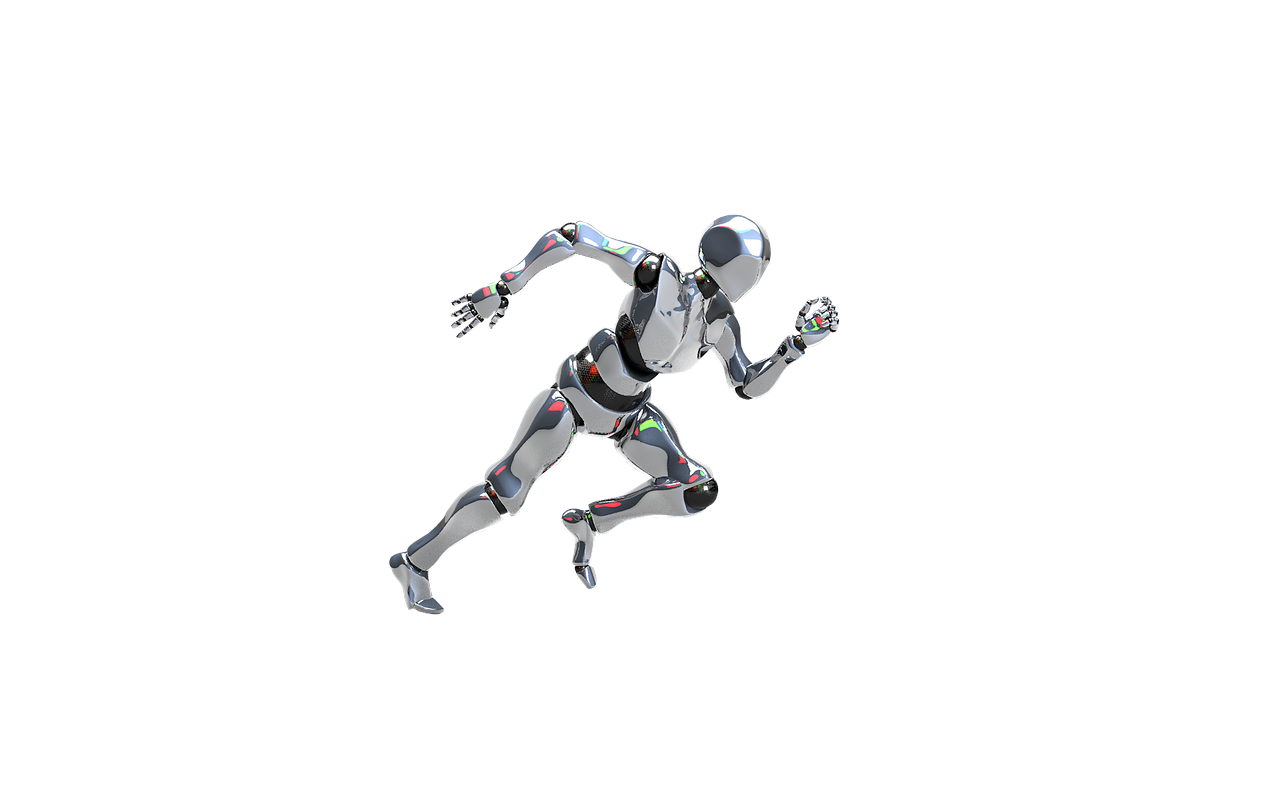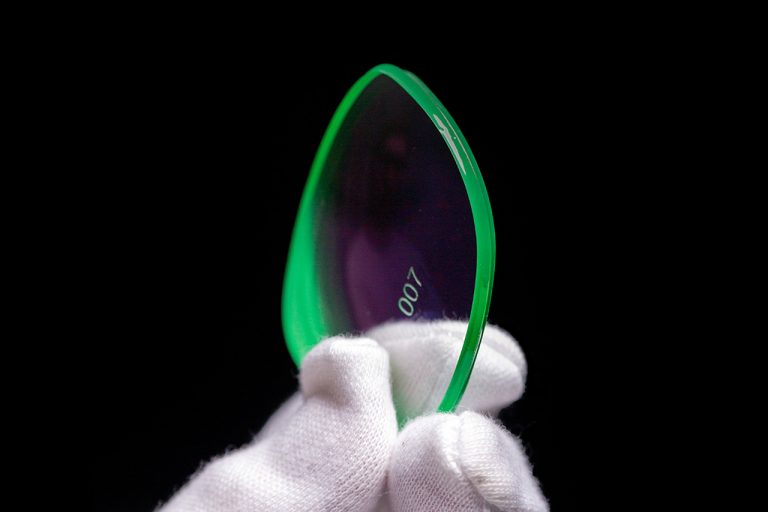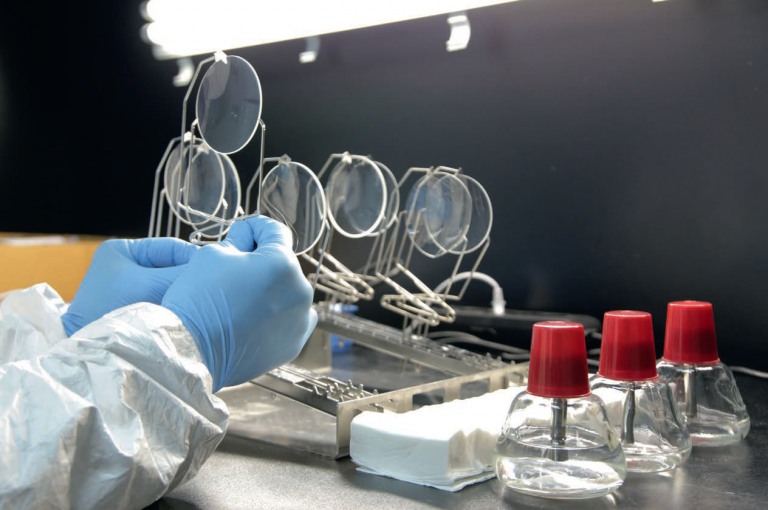Artificial Intelligence and Society
Self-driving cars, service robots and smart homes – all AI applications – will change how we live. This article discusses the following questions: Which existing technical innovations already use AI and which will do so in the near future. What effect will they have on society? How should we deal with these effects? Should we intervene to regulate them, in order to make sure we pass on a sustainable world to our children?
By Wolfgang Ertel
What is Artificial Intelligence?
For over sixty years, Artificial Intelligence (AI) has been concerned with the question of whether and how computers and robots can do things that we humans can (still) do better. Many cognitively difficult tasks for us, such as playing chess and mathematics, logic and pattern recognition, can be solved better today by computers than by humans, for example using AI techniques.
Other tasks, such as recognizing and gripping a key in your pocket or finding a door in a room, are easy for humans, but (still) pose considerable difficulties for robots. According to the definition above, these are the tasks which Artificial Intelligence is currently working on. Indeed, in service robotics today, intense research is being carried out into tasks such as learning to grasp an object or how to recognize an object in complex surroundings.
Particularly significant here is the ability of people to learn, which in many areas is still far superior to that of computers. Ever since the early days of Artificial Intelligence, research has been going on into machine learning, and since the mid-1980s there have been a number of breakthroughs. For example in 1987, a program called Nettalk was developed that was capable of reading texts aloud. In 1999, LEXMED introduced an intelligent medical diagnosis program [SER01] that was as reliable at detecting appendicitis as an experienced surgeon.
Deep Learning led to a breakthrough
In the past decade, there has been a breakthrough in the field of machine learning. Based on the results of many researchers in the field of artificial neural networks, computers today can use deep learning to recognize almost any object on a photograph, better than we humans can.
This success is based on the fact that it is now possible to train neural networks successfully with up to 1000 layers of simple neurons on the computer. Previously, neural networks with more than three layers posed major problems and only relatively simple objects could be detected by pattern recognition in images.
In the years ahead, deep learning will lead to significant improvements in medical diagnosis, for example based on radiographic imaging. Deep learning will also play a major part in autonomous driving, which is expected to become common practice worldwide from about 2020 onwards. Another important application of deep learning is in service robotics, because robots need to be able to recognize objects reliably. Indeed this is already possible to a very high standard.
AI will make almost all specialists redundant
Already today, or at the latest in the near future, many difficult cognitive and specialist motoric tasks can be performed better using machine learning algorithms than by humans. For example, in games like chess, Go, and poker, even the most skilled humans can no longer compete with adaptive algorithms. Automatic pattern recognition, already mentioned above, will become common practice in all areas of life. Diagnoses in almost all areas of medicine and technology are now done better, faster and more effectively by computer.
AI systems are superior to humans for a variety of reasons:
- Potentially a computer has a wider variety of sensors at its disposal than a human being. An autonomous vehicle is not only aware of its surroundings through 3D cameras but also through laser scanners, radar and ultrasonic distance measurement.
- Machine learning algorithms are now able to extract knowledge from large amounts of data in multi-dimensional space and apply it quickly and efficiently. Such quantities of data can be far larger than anything a human could assimilate, even over the course of a whole lifetime. For example, a doctor who performs a specific operation every day may carry out this operation about 8000 times over 40 years. By contrast, a computer can learn from the data of millions of operations, thereby significantly improving the results.
- Unlike humans, computers are able to share entire content of their memory – and thus their complete knowledge – in seconds with other computers. Thus with Artificial Intelligence learning can be distributed. For example, all cars in a fleet of millions of autonomous vehicles can send all the data collected on the road to a central server, where a learning algorithm can derive new driving strategies from the data. After extensive trials, these driving strategies can then be downloaded to all cars, so that all the vehicles have the benefit of learning from the data of the other vehicles. This is not possible with humans, because of the physical limitations of the brain and the body. In our case, our knowledge is specific to our brain which is firmly embedded in our body. In contrast to computers, the way we exchange knowledge and information through language and images is very complicated and time-consuming.
- Humans are not entirely rational, everyone has their own ethics . In the case of machines, this can be defined and implemented in a consistent way.
- We humans learn complex skills, such as motoric, best as a child. When we perceive objects, our brain has been trained to recognize things that we often saw as a baby, such as human faces. The recognition of cancerous tissue on noisy MRI images, however, did not form part of that experience as a toddler, and thus it can only be learnt in adulthood, when the brain is no longer so well adaptive or so fast. Highly specialized deep learning networks have a clear advantage here.
- The evolution of technology has developed exponentially over time since the invention of the steam engine in the eighteenth century. Where AI is concerned, this means that we should expect the pace of innovation to be faster over the next ten years than in the previous decade. This prediction is further supported by the fact that large parts of industry have not yet begun to embrace the current successes in machine learning.
Limits to Artificial Intelligence
Despite all the successes, adaptive AI systems are still inferior to humans in many fields. Coping with completely new situations remains a major problem. For example, an office worker or secretary is often faced with unexpected tasks or problems and has to come up with creative solutions. Even the most intelligent machine cannot handle such situations. Although creativity is a key focus of research into AI at present, there is still a long way to go.‘ Consciousness ’ still remains a major problem. Although research into consciousness has a long tradition in philosophy, there are few promising models for the implementation or evolution of a consciousness or intrinsic motivation in AI. This is related to our ability to reflect on ourselves at various levels and then draw appropriate conclusions. Research is being carried out into the field of ‘Artificial General Intelligence (AGI)’, however thus far with modest success.
Artificial Intelligence and the workplace
In January 2016, the World Economic Forum published a study [SS16], much quoted in the German press, which forecasts that over five million jobs would be lost in industrialized countries over the next five years due to Industry 4.0.
This forecast is hardly surprising, since the automation of factories, offices, administrative tasks, traffic, homes and many other areas since the invention of the steam engine has ensured that more and more work is now done by machines, computers and robots. Since about 2010, AI is one of the most important factors in this development.
Presumably most people agree that heavy, dirty and unhealthy tasks are better done by machines; which is why we are willing to let such changes continue.Thus in many cases automation is a blessing for humanity, at least when it is not accompanied by harmful side effects such as damage to the environment. Many of the unpleasant tasks mentioned above can be done faster, more accurately and above all more cheaply by the machines. This seems almost like paradise on earth: we have less and less unpleasant work to do and more time for the nice things in life – with the same, or even more wealth. After all, business would not use such machines if they did not significantly improve productivity. Nevertheless, it does not seem as if we are on the way to paradise.
For decades, we’ve been working over 40 hours a week, we feel under pressure, suffer from burn outs and other stress-related conditions and actual wages continue to fall. Why is this so, when productivity continues to rise? Many economists say this is all down to ‘competitive pressure’.
Due to competition, companies continually have to reduce their production costs and consequently dismiss workers, leading to increased unemployment. In order to avoid a reduction in turnover, due to the lower prices for the products, more products have to be manufactured and sold. Economic growth has to be sustained!
In a country such as Germany – and most other industrialized countries including China, where the population is no longer growing – for the economy to continue to grow, inevitably each citizen has to consume more.
This requires creating new markets1 and advertising has the task of convincing us that we want the new products. Only in this way – allegedly – can “sustainable” prosperity be assured. There seems to be no way out of this growth and consumption spiral. This has two fatal flaws. On the one hand, increased consumption does not make people happier; on the contrary, mental illness is on the rise. Even more obvious and more catastrophic are the effects of growth on our living conditions. It is no secret that the limits to global growth have long since been exceeded [MMZM72, Ran12]. In other words, we are depleting nature’s finite resources and thus living at the expense of our children and grandchildren, who consequently will have worse living conditions than we do today.
It is also well known that the additional growth in our economy continues to have a negative effect on the environment – for example, through increased amounts of CO2 in the atmosphere resulting in climate change [Pae16]. We are destroying the very basis of our own life. It is thus clear that we should abandon this fatal growth spiral immediately in order to ensure a future worth living. But how?
Let us go back to the way to paradise that AI and automation seem to be offering. Apparently the way we have adopted it does not lead to paradise. Understanding this problem and finding the right way to go is one of our key tasks today.
Due to the often complicated interrelations, this cannot be fully discussed here. Nonetheless, I would like to give the reader some food for thought and recommendations for action.
Despite the fact that economic productivity continues to grow in almost all areas, employees are still required to work as hard as ever while the actual wages fall [Pik14]. Thus workers do not benefit from the growth. Thus the question has to be asked: where are all the gains in productivity going?
Obviously not to the people who have created them. Instead, some of the profits are spent on investments and thus further growth, with the rest ending up with the people who own the capital [Pik14], leading to ever greater concentrations of capital among the few wealthy people and private banks, while poverty around the world continues to increase. This in turn increases tension and ultimately leads to wars, mass migration and flight. What is lacking is a fairer distribution of productivity gains.
How can a fairer distribution of wealth be achieved?
Unfortunately, too few economists are carrying out research into this highly interesting topic. Apparently politicians have no sustainable solution to offer; and this despite the fact that politicians and industry are constantly trying to improve our economic system. Obviously, all previous attempts to optimize the parameters of our current capitalist system have not led to a fairer distribution of wealth – in fact quite the reverse.
That is why economists, and financial experts in particular, should now start to question the current system and look for alternatives. We should ask ourselves how the laws and regulations which govern our economy can be changed so that everyone benefits from the gains in productivity.
There is now a growing number of economists and sustainability experts coming up with very interesting alternatives. Without going into the details, I would like to briefly touch on some of the key issues and solutions.
The first problem is the provision of available capital by the banks. New money – needed among other things to sustain our economic growth – is today created by private banks. This is made possible by the fact that banks only need to own a small proportion of the money they lend out, namely the reserve ratio. The reserve ratio in the EU in 2018 is one percent.
The states cash borrow cash money from private banks in the form of government bonds thereby incurring debts. This is how our current sovereign debt crisis arose. The problem could be solved relatively easily by banning the creation of deposit money by increasing the bank reserve ratio to 100 percent [Fis35].
The provision of money then becomes a state monopoly of central banks again and the new money provided can be used directly by the state for the common good. There is no need of further justification that this simple measure would significantly alleviate the sovereign debt problem. For example, states would no longer have to pay interest on the money made available to private banks.
Other interesting elements of such an economic reform could be a change of the current interest rate system to the so-called natural economic order [Ken06] as well as the introduction of the welfare economy [Fel14] and the biophysical economy [GK09, Küm11]. The practical introduction of these two or similar economic models could lead to a tax reform, the main elements of which would be the abolition of income tax and a significant increase in VAT on energy and resource consumption [SR17].
This would lead to a more sustainable humane world of high prosperity, less damage to the environment and increased regional economic cycles. In order to fund such an improved economic system, economists should focus their research on alternative sustainable economic models based on simulations and empirical investigations. The main goals are to achieve a more equitable wealth distribution and ecological sustainability as well as a peaceful social community.
At the end of this section, allow me to quote the renowned physicist Stephen Hawking. At www.reddit.com1 he was asked what he thought about the unemployment caused by automation, to which he replied: “If machines produce everything we need, the outcome will depend on how things are distributed. Everyone can enjoy a life of luxury, if the machine-produced wealth is shared fairly. Otherwise most people will end up miserably poor, if the owners of the machines are allowed to lobby successfully against a fair distribution of wealth. Thus far, the trend seems to be toward the second alternative, with technology driving ever-increasing inequality.”
Armaments
A shocking video at autonomousweapons.org shows how tiny autonomous killer drones, using current technology including AI, can find and kill their victims autonomously. Today such weapons, first and foremost in the USA, form part of the standard arsenal of a modern army, despite petitions from thousands of scientists against the use of such weapons4.
Politicians from all countries and the United Nations need to urgently tackle this issue and address the ethical problems. The situation is comparable to the invention of the nuclear weapons which ultimately were used. There is good reason to fear that killer drones will also end up being deployed. So does that mean research into AI should be stopped? If the answer to this question were ‘yes’, this would mean that some research into mathematics, neuroscience and other disciplines would also have to be banned.
Leaving aside the fact that many organizations would probably ignore such a ban, the logical consequence would be that science as a whole would then be banned. Those who are committed to the pursuit of knowledge certainly do not want that. Thus the issue of ethics and morality must be focused on the application of the research results, in this case the application of AI. Thus society has to discuss whether we want autonomous weapons that decide independently on life and death.
The singularity: human and/or machine?
Due to the ever increasing pace of technological development already mentioned, AI systems are fast becoming better and better. By comparison, human intelligence will only increase very slowly, if at all, over time. As the left diagram in Figure 1 shows, under these conditions there must come a time in the foreseeable future when the two curves of human and machine intelligence intersect. This point when machines overtake humans is called singularity and according to a survey of 170 AI experts [MB16] it will occur between 2050 and 2100, although such estimates are very speculative.
There could also be a scenario as shown by the middle graph in Figure 1. According to this example, the intelligence of the machines would never exceed the human level, but at best approach it asymptotically. It is sometimes argued that humans will never succeed in building a machine that is smarter than its inventor, but this argument ignores the fact that machines are capable of learning. The ability to learn is currently still limited to specific tasks. However, it cannot be ruled out that algorithms will be developed that lead to machines capable of learning at a meta-level and thereby continue to develop themselves further. Singularity could then no longer be excluded. Thus we should start now to reflect on the possibility of singularity and its consequences.
About the author
Wolfgang Ertel studied mathematics and physics at the University of Konstanz and received his doctorate in 1992 at the Technical University of Munich with the dissertation parallel search with randomized competition in inference systems. Since 1994 Ertel holds a professorial chair at the University of Ravensburg-Weingarten. His teaching areas are mainly, Artificial Intelligence, machine learning, Mathematics and sustainability. Ertel’s fields of research are artificial intelligence, machine learning and intelligent autonomous mobile robots.








